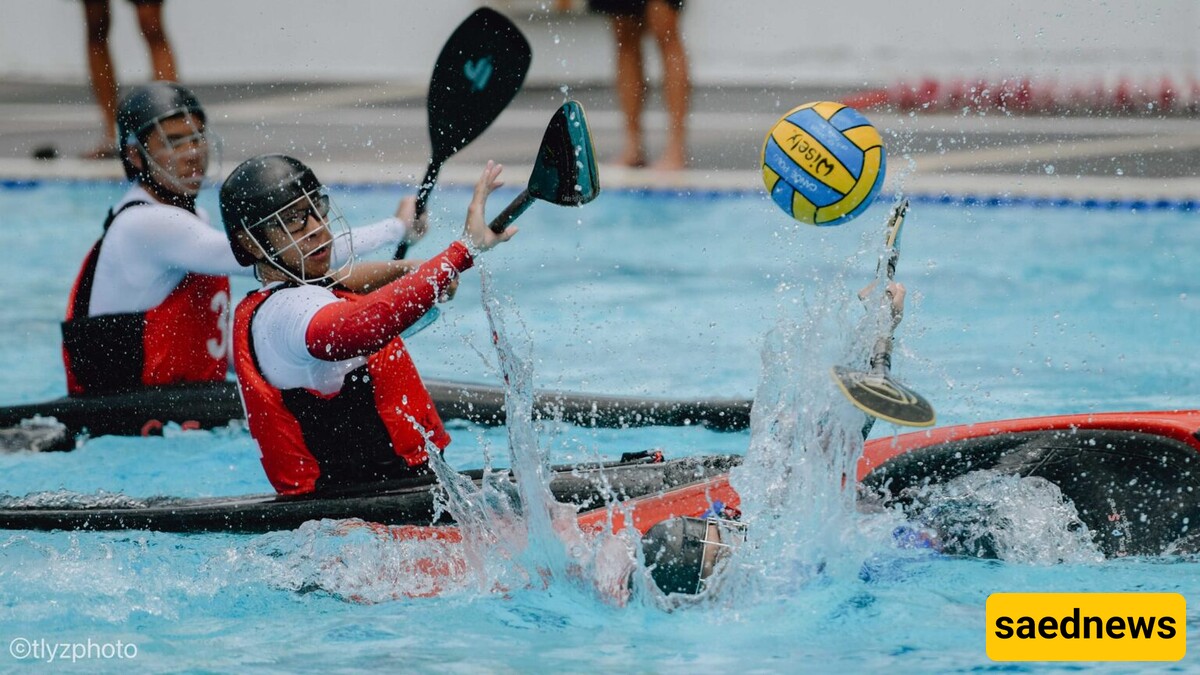SAEDNEWS: The roots of canoe polo as a sport can be traced back to other canoeing disciplines. In the early 1930s, Europeans began sitting in kayaks and throwing a ball to one another, marking the beginnings of a new game. However, this sport developed differently across various countries, meaning its growth and expansion took multiple paths.


Canoe polo is a team sport played with a ball on water, involving two teams of five players each, with every player seated in a canoe. Each team aims to score goals by throwing the ball into the opposing team's net. The team with the most goals at the end wins the match.
Canoe polo has been played worldwide for centuries, either as a recreational activity or in a competitive format. The sport is governed internationally by the Canoe Polo Committee of the International Canoe Federation (ICF), which organizes world championships every two years.
Canoe polo combines elements of water polo and canoeing, and tactically resembles basketball and water polo. Athletes require excellent canoeing skills, boat control, quick reflexes, and high physical fitness, particularly in their arms. A water polo ball is used, and players can hold the ball for only 5 seconds after possession.
Dribbling involves throwing the ball forward and paddling past defenders. Tackling the player in possession of the ball is allowed by pushing their shoulders or back. Referees use green, yellow, and red cards to penalize players for personal fouls. Substitutions are unlimited and do not require the referee’s permission, but the outgoing player must leave the field before the substitute enters.
Canoe polo has been played worldwide for centuries as both a recreational activity and a competitive sport. Since 1994, the Canoe Polo Committee of the International Canoe Federation has organized the world championships every two years.
By 2012, ten editions of the Canoe Polo World Championships had been held. In the men’s category, Australia and the Netherlands each claimed three championships, while France and the United Kingdom each won twice. In the women’s category, Germany and the United Kingdom won four times each, and Australia twice.
In the World Games, Germany, France, and the Netherlands have each secured one men’s championship, while Germany has won twice and the United Kingdom once in the women’s division.
Canoe polo combines water polo and canoeing, and its tactics resemble basketball and water polo. Players require mastery in canoeing, agility, and exceptional upper body strength.
A water polo ball is used, and possession is limited to 5 seconds per player.
Dribbling involves throwing the ball ahead and paddling past defenders.
Tackling involves pushing the shoulders or back of the ball carrier.
Referees issue green, yellow, or red cards for personal fouls.
Substitutions are unlimited but must follow the rule that the outgoing player exits the field before the substitute enters.
The playing area measures 35 x 23 meters and is typically outlined using suspended ropes, similar to swimming competitions.
Goals: Goals measure 1 meter wide and 1.5 meters high and are suspended 2 meters above the water. Goalkeepers defend by holding their paddles vertically.
Game Duration: Matches consist of two 10-minute halves. Like water polo, each half begins with all players lined up facing their goal as the referee tosses the ball to the center of the field.
As outlined, canoe polo is a dynamic sport with roots dating back centuries. Played on water with canoes, it blends the excitement of team sports with the technical challenges of canoeing. Canoe polo appeals to beginners and professionals alike, offering a unique combination of skill, strategy, and athleticism.

